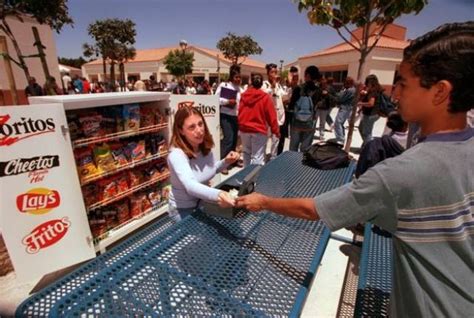Immerse Yourself in the Golden Era of Education

The 1990s marked a golden era for high school education, characterized by significant technological advancements, cultural shifts, and a renewed focus on student success. This article will embark on a nostalgic journey through the transformative landscape of high schools during that unforgettable decade.
A Technological Revolution
The Dawn of the Internet
The 1990s witnessed the explosion of the internet, which rapidly infiltrated high schools. In 1996, only 14% of schools had internet access; by 2000, that number had skyrocketed to 95%. This technological revolution transformed education, providing students with unprecedented access to information and educational resources.
The Rise of Personal Computers
Personal computers became ubiquitous in high schools during the 1990s. Schools invested heavily in computer labs, and many students began using them at home. This led to a surge in computer literacy and the development of new educational software programs.
A Cultural Transformation
Changing Demographics
The 1990s saw significant demographic shifts in the United States. The number of students from minority backgrounds increased dramatically, reflecting the growing diversity of the nation. This led to a greater emphasis on cultural sensitivity and inclusivity in education.
Youth Subcultures
The 1990s spawned a host of youth subcultures, each with its own unique style, music, and language. From grunge to hip-hop, these subcultures had a profound impact on high school culture. They fostered a sense of belonging and identity among students.
A Focus on Student Success
Education Reform
The 1990s brought about a wave of educational reforms aimed at improving student outcomes. The National Education Association estimated that spending on K-12 education increased by 33% between 1990 and 2000. This investment was directed towards reducing class sizes, improving teacher training, and developing new curricula.
Standardized Testing
Standardized testing became increasingly prevalent during the 1990s. The No Child Left Behind Act of 2001 mandated annual testing for all students in grades 3-8. While these tests aimed to identify students who needed additional support, they also created stress and anxiety for students and teachers.
Key Events
Columbine High School Massacre (1999)
This horrific tragedy sparked a national dialogue about school safety and gun violence. It led to increased security measures in schools and a heightened awareness of the mental health needs of students.
Launch of the National School Lunch Program (1995)
This program ensured that students from low-income families had access to free or reduced-price meals at school. It played a vital role in addressing food insecurity and promoting student health.
Technological Advancements
Interactive Whiteboards
Interactive whiteboards began to replace traditional chalkboards in high school classrooms. These digital displays allowed teachers to incorporate multimedia content and engage students in interactive learning experiences.
Video Conferencing
Video conferencing technology emerged in the 1990s, enabling students to connect with experts and classmates from around the world. This brought diverse perspectives into the classroom and expanded learning opportunities.
Educational Software
A wide range of educational software programs emerged during the 1990s, providing students with interactive simulations, online quizzes, and personalized learning experiences. This technology helped to diversify instruction and accommodate different learning styles.
Cultural Phenomena
Teen Movies
The 1990s witnessed a resurgence of teen movies, which captured the experiences and challenges of high school students. Films like “Clueless” and “She’s All That” reflected the youth culture of the time and became cultural touchstones.
Boy Bands and Girl Groups
Boy bands like NSYNC and Backstreet Boys and girl groups like the Spice Girls dominated the music scene in the 1990s. Their catchy tunes and upbeat lyrics resonated with high school students, creating a sense of community and shared experience.
Fashion Trends
The 1990s saw a wide range of fashion trends, from grunge to preppy to goth. Students expressed their individuality through their clothing, which often reflected their subcultures or personal interests.
Strategies for Success in High School in the 90s
Effective Strategies
* Get involved in extracurricular activities. Research by the National Bureau of Economic Research found that students who participated in extracurricular activities had higher grades and were more likely to graduate from college.
* Build relationships with teachers and staff. The National Dropout Prevention Center reports that students with positive relationships with their teachers are less likely to drop out of school.
* Use technology to your advantage. A study by the Pew Research Center found that students who used computers for educational purposes had higher math and reading scores.
* Take advantage of support services. Every high school offers guidance, tutoring, and support services to help students succeed.
* Set goals and create a plan to achieve them. Encourage students to set achievable goals and create a step-by-step plan to reach them.
Conclusion
High school in the 1990s was a transformative experience for many students. The technological advancements, cultural shifts, and focus on student success created a dynamic and engaging educational environment. By understanding the unique characteristics of this era, educators can continue to build upon its successes and create even more effective and fulfilling high school experiences for future generations.
Additional Resources:
- The 1990s: A Decade of Transformation for High Schools
- The Impact of Technology on High School Education in the 1990s
- The Teen Culture of the 1990s
- The Educational Reforms of the 1990s
- The National School Lunch Program
